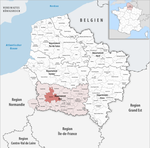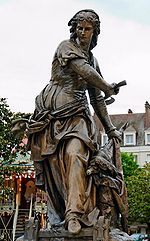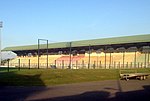Basse Oeuvre

The Parish Church of Our Lady of the Basse Œuvre of Beauvais (French Église Notre-Dame-de-la-Basse-Œuvre de Beauvais) is a church at the west end of Beauvais Cathedral dating to the 10th century. It is the western end of a much longer church which had been Beauvais's cathedral, and was built in the form of a Roman basilica, a style which still characterized the Carolingian era. The name Basse Œuvre ("Lower Work") dates from the 13th century, and distinguishes it from the Nouvel-Œuvre ("New Work"), the present 13th century Gothic cathedral. It was classed as a historic monument in the list of 1840. The 21 archaeological digs of Émile Chami highlighted this monument.
Excerpt from the Wikipedia article Basse Oeuvre (License: CC BY-SA 3.0, Authors, Images).Basse Oeuvre
Place de la Cathédrale, Beauvais
Geographical coordinates (GPS) Address External links Nearby Places Show on map
Geographical coordinates (GPS)
| Latitude | Longitude |
|---|---|
| N 49.43276 ° | E 2.080822 ° |
Address
Chapelle de la Basse Œuvre
Place de la Cathédrale
60000 Beauvais
Hauts-de-France, France
Open on Google Maps









